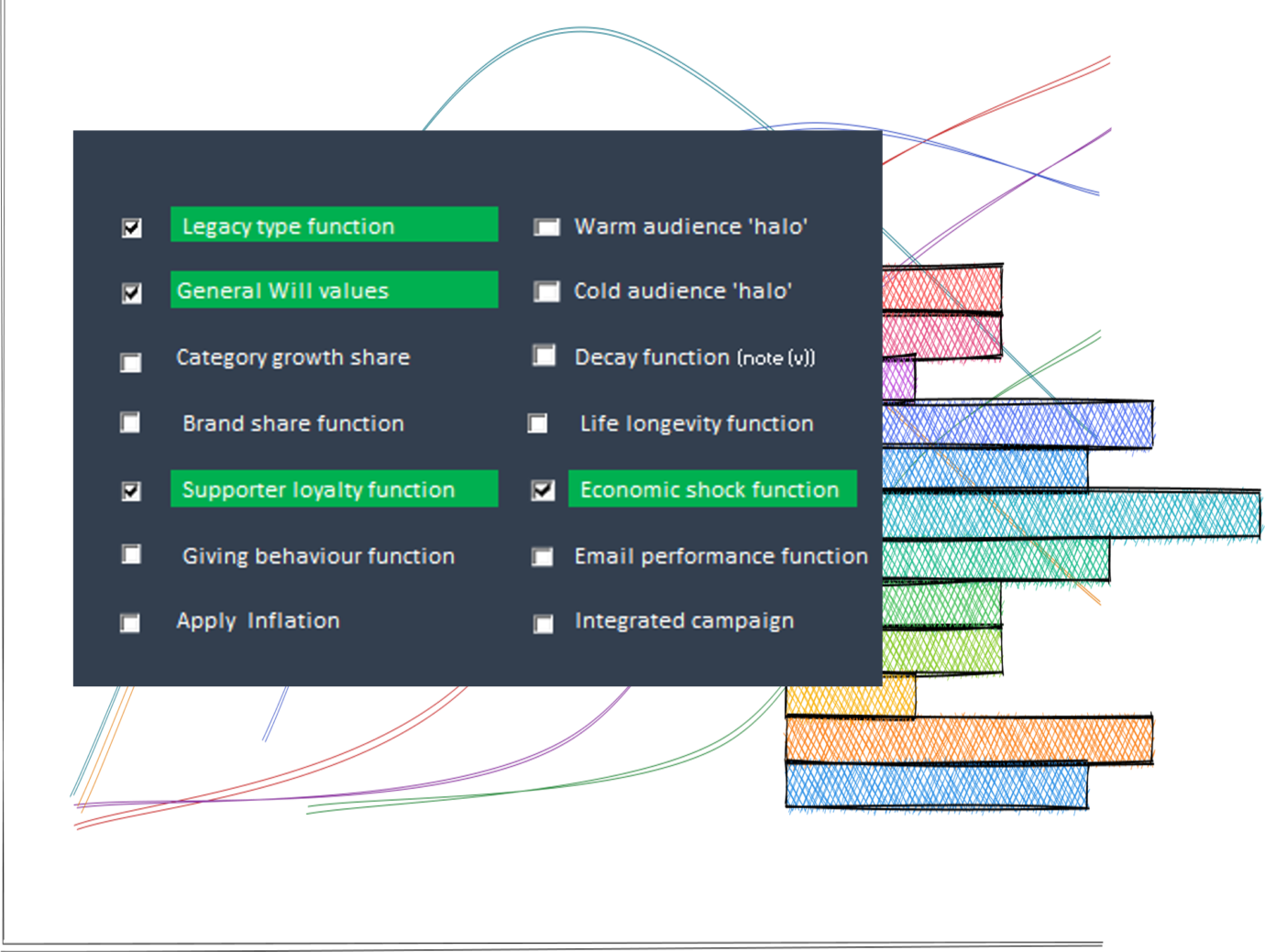A unique forecasting application

Introduction
An alternative approach
We rejected the common approach as it limits your ability to factor in adjustments to your legacy activity, such as adding new channels, introducing Free Wills into your proposition mix or changing stewardship communications.
We wanted a tool for legacy fundraisers that would give both a top line income projection while enabling users to understand the impact if they changed every single element of a legacy marketing plan, as well as factoring in the vital external factors such as shifts in demographic changes and economic conditions.
Key Benefits
- Designed for flexible 'what-if' scenario forecasting
- Provides a 40 year forecast at a monthly basis
- Create and compare multiple scenarios
- Separate income lines for legacy supporters, non-legacy supporters and legacies from the general public.
- Offers many unique functions designed for the needs of legacy fundraisers
- Apply trends and 'what-if' questions easily and see the impact in real-time
- Doesn't require actual data to provide the forecasts
- Outputs volumes and values for residual and pecuniary legacies
- Fully supported
Optimising the present
- Should we focus on recruiting legacy prospects from the general public, or through the existing supporter base ?
- Can I increase investment without diminishing performance effectiveness?
- What are the long term implications of targeting a younger audience/
- What is the optimal balance between acquisition reach and better targeting?
- Where in the programme can I make the biggest gains?
- Which channels should I invest in?
Anticipating the future
- What if we have another economic shock or recession?
- How reliant are we upon our supporter base?
- What's the impact of slowing property inflation?
- What if pecuniary legacies continue to outgrow residual volumes?
- What happens if our category becomes less attractive?
- Does our brand make a difference to legacy income?
Common Questions
A Five Stage process
1. Audience
Firstly we define how many legacy supporters you all ready, their legacy status and their approximate demographic profile. We then help you define your target audiences (both warm and cold) that will generate new legacy supporters. You can define up to twenty audiences for each scenario.
2. Performance
Step 2 is defining the expected performance of each audience. This includes their initial recruitment performance, how they are expected to react to stewardship journeys and, most importantly, what proportion may leave you a legacy gift when they pass away, the type of legacy gift and the expected value.
3. Activity
For step 3 we work with you to produce an annual activity expenditure plan for each audience. The plan is for up to ten years and each year can be entirely different or replicate previous years – it’s as flexible as you need it to be.
4. What-if’s
By now we will have generated all the information necessary to create a baseline scenario. Step 4 is where we apply ‘what-if’ functions that help generate immediate answers to some of the questions you may have such as – what if residual values increase year on year, what if we improve supporter satisfaction, what if there’s an improvement to life longevity, and many others.
5. Reporting
Reporting delivers both the data files and summary presentation slides that cover key legacy KPI metrics, together with our commentary on the relative performance of the scenarios. In-addition we include a meeting with the analyst and a fundraising strategist which offer the opportunity to discuss the findings in greater depth.